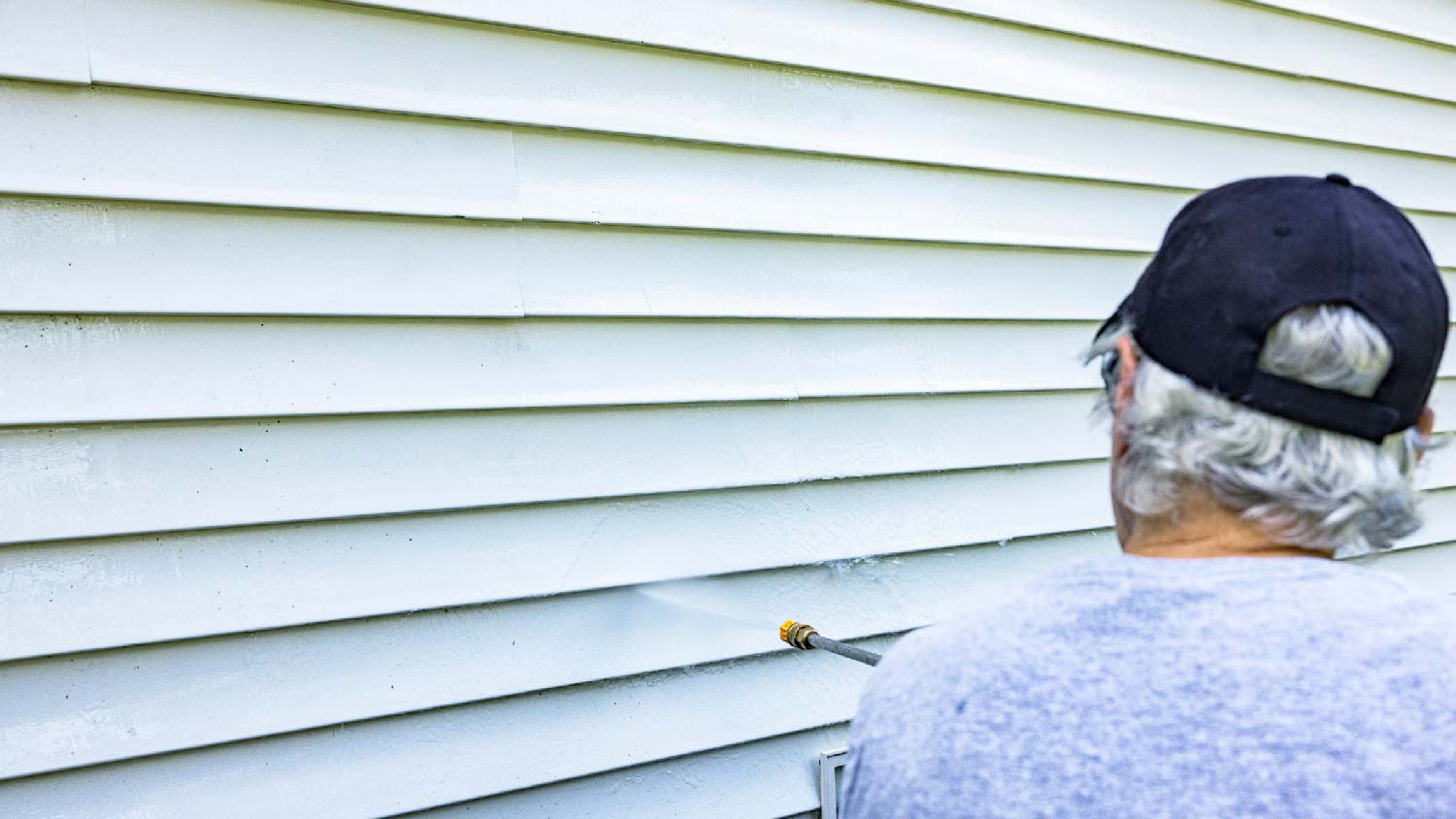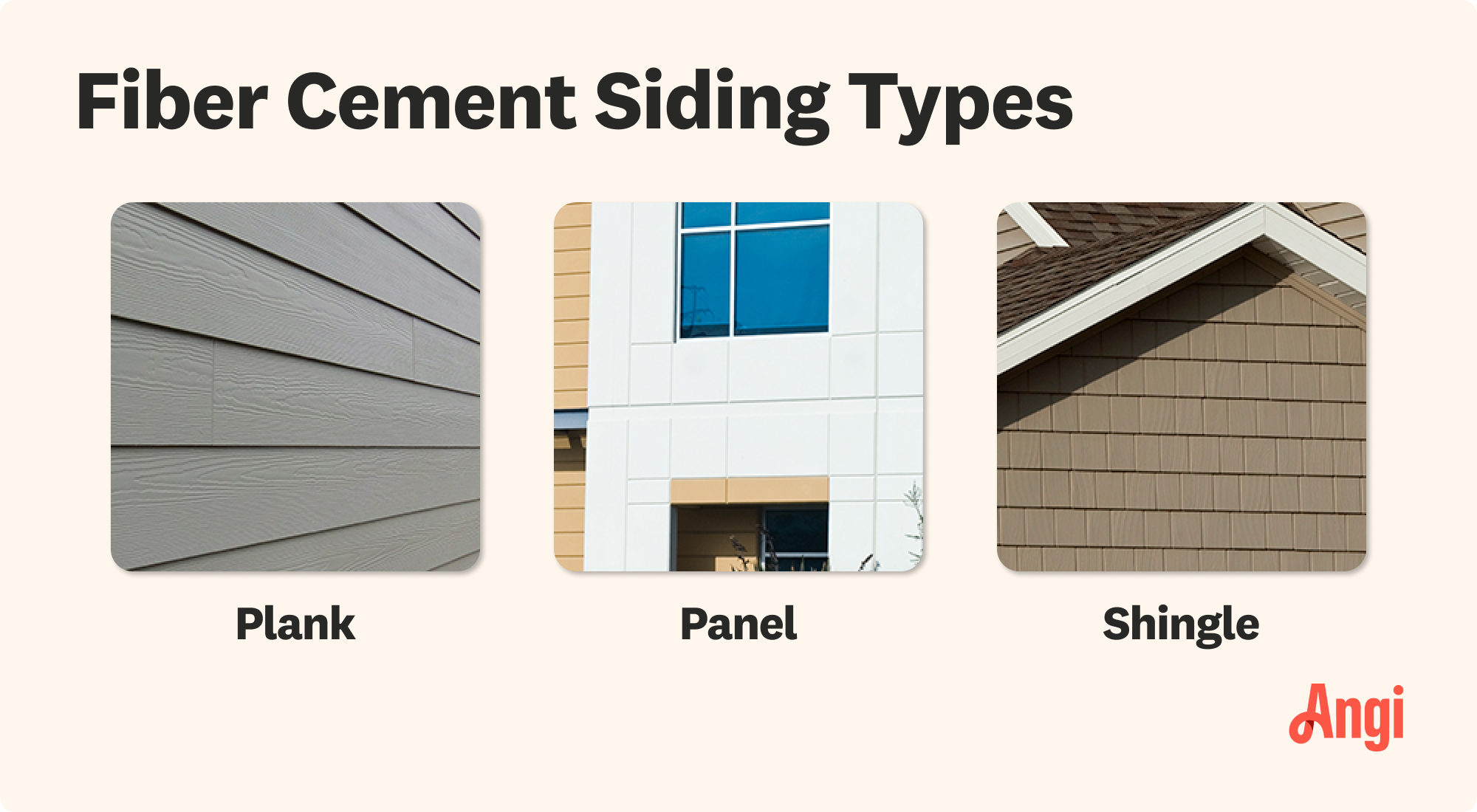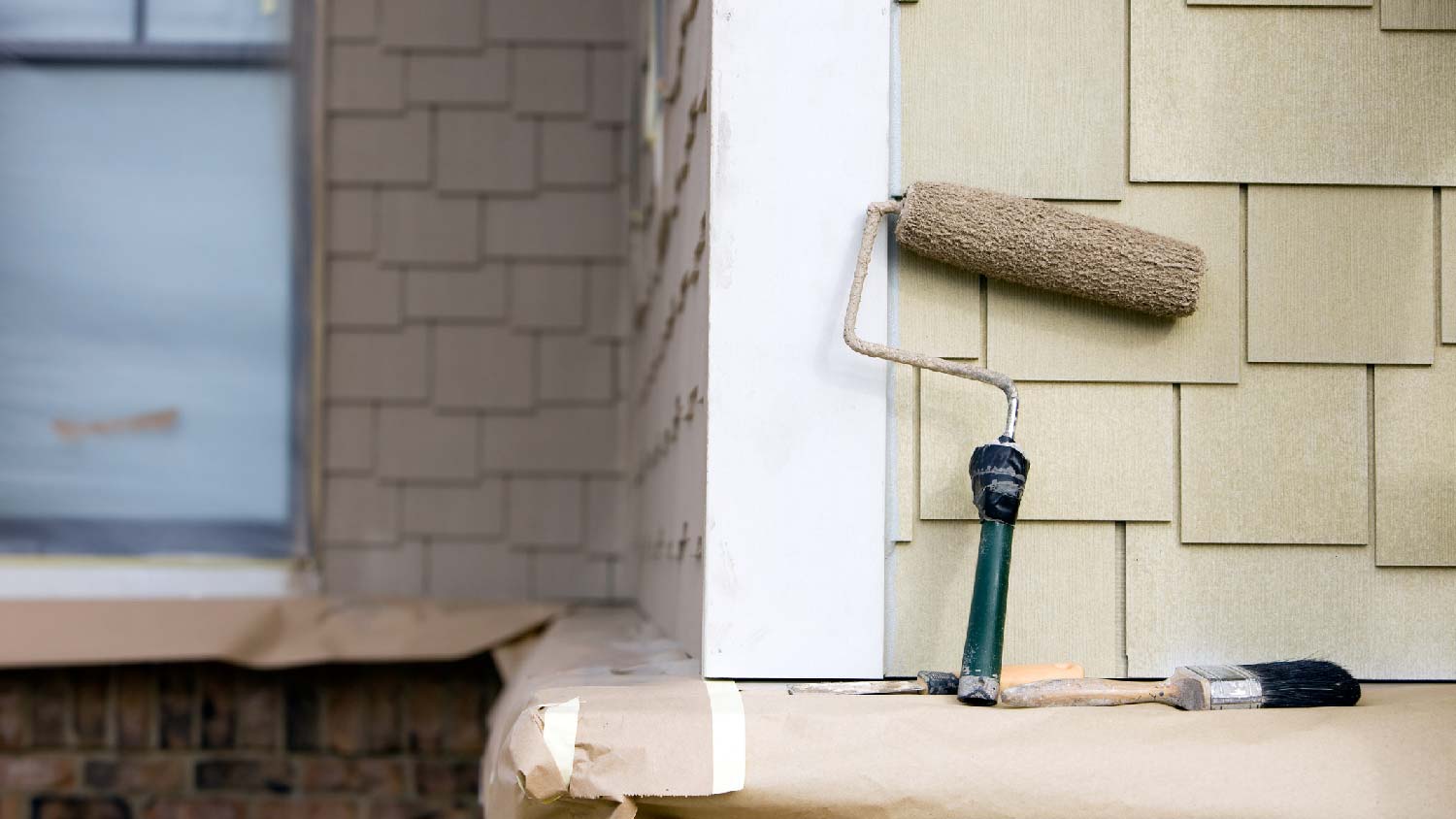
Wood siding repair costs depend on the size, material, repair type, and more. Keep reading to learn more about siding repair budgeting.
Fiber cement siding is highly durable but has several drawbacks to consider


Fiber cement siding costs $14,774 on average for a single-family home.
Common fiber cement siding problems include moisture issues, difficult installation, and ongoing maintenance requirements.
Fiber cement siding has limited customization options, and it’s more expensive than other siding options.
Consult a local siding repair contractor to evaluate whether your home is a candidate for these types of frequent siding problems.
If you’re building a house or refinishing your siding, you might consider fiber cement siding. But not all siding is created equal—there are common fiber cement siding problems to be aware of.
Keep reading to learn more about the most frequent fiber cement siding problems and whether or not it’s the best choice for your project.
Contact a pro to diagnose any potential damage to your home's siding, as they may be able to identify damage that is difficult to spot.

If you choose to save money by painting your fiber cement siding after installation, keep your paintbrush handy. After the initial paint job, you’ll need to repaint it every decade or less to keep looking its best—which simply isn’t the case with other alternatives like vinyl.
Fiber cement also requires more frequent cleanings, as the material itself is susceptible to dust buildup. Unlike cleaning vinyl siding, you can’t use a fast method like a pressure washer to get the job done. Instead, you’ll need to use soft and gentle (also known as time-consuming and tedious) cleaning methods.

Although not inherently absorbent, fiber cement siding can retain moisture pretty easily if there are any gaps in the siding or issues with installation. That moisture can lead to more costly issues like damage, rot, and mold.
Some other materials, like vinyl or aluminum, are more water-resistant and offer increased peace of mind.
The installation process for fiber cement siding is quite complex. The material itself is weighty and cumbersome, requiring precise measurements and cuts, careful transportation, and much manpower.
Because of this, you’ll simply need more hands on deck to get the job done. While you could learn how to install fiber cement siding yourself, it’s usually not recommended for most homeowners—especially ones who haven’t done any sort of siding installation previously.
Your best bet with this material is to hire a fiber cement installer near you to do the job safely and efficiently.
Fiber cement is more energy efficient than stone or brick, but nowhere near vinyl's or wood's efficiency level.
While this material does maintain heat well, it can also take a while to get to the right temperature. That means your systems and appliances will have to work harder to do their jobs efficiently, equaling more money in utilities per month and faster wear and tear.

Apart from the ability to paint it the color you choose, there aren’t many other customization options available. When compared to more unique finishes like brick, clapboard, stone, or stucco, fiber cement’s aesthetics are pretty lackluster.
In some cases, you may be able to choose between a few styles, like vertical or horizontal shake or even stone. But typically, it’s pretty straightforward and standardized because of its heavier composition and complex installation.
On average, it costs between $6,631 and $23,023, or about $14,774 for a single home. The cost of Hardie board siding, the name-brand option, is slightly higher at $17,500 for a single home.
Fiber cement siding is usually quite a bit more expensive than other alternatives. Brick siding is the only option that is consistently more expensive than fiber cement.
| Material | Average Cost (per sq. ft.) |
|---|---|
| Fiber Cement | $2–$15 |
| Vinyl | $3–$12 |
| Brick | $9–$28 |
| Stucco | $7–$9 |
| Wood | $3–$10 |
While fiber cement material is more expensive to begin with—especially if you choose a pre-painted or pre-stained option—it’s also more expensive to install (as mentioned above). And the higher maintenance requirements add to the overall lifetime cost of fiber cement siding.
Based on all of this information, you may wonder if fiber cement siding is even a good investment.
While there are quite a few problems, there are also a handful of benefits of fiber cement siding to consider, like:
It’s very durable: It takes a lot to warp or crack fiber cement siding. This is especially true if you live somewhere with many weather challenges, like heavy rain, snow, or windstorms.
It’s environmentally friendly: Fiber cement siding is made from recycled materials and sustainable products, most of which are non-toxic (now that asbestos is removed from the equation).
It’s pest- and fire-proof: That durability adds protection against other threats, like fire and pests. It doesn’t rot and is noncombustible, which is an added benefit to homeowners—and may lend itself to a homeowners insurance discount.
It’s not the most expensive: While it’s not as affordable as vinyl, it’s also not as expensive as brick or stucco. And with its other benefits, it often has increased ROI when it comes time to sell your home.
If you’re comparing your options, one of these other alternatives may be a better choice.
Vinyl siding: Vinyl siding is easily the most popular siding choice because of its low maintenance, versatility, and affordability. While it’s not as durable as fiber cement siding, it’s certainly more approachable.
Brick siding: Brick siding offers a more traditional look and feel than other siding materials. When comparing fiber cement siding vs. brick, some key features that stand out are that brick is often more expensive, both in terms of material and labor, and has even more limited customization options. But, for those who like the look of brick, there’s no natural alternative.
Stucco siding: Stucco siding is durable and looks good, and when comparing fiber cement siding vs. stucco, it comes in at a lower price point, too. But it’s not water resistant and offers even fewer customization options than fiber cement.
Wood siding: If the environment is your top concern, it’s hard to beat wood siding. Plus, it’s easily stained and treated, comes in various wood siding types, and is easy to work with. But maintenance is tedious, and it attracts pests. Not to mention, it’s a giant fire hazard if left untreated, which isn’t good for the cost of your homeowners insurance.
From average costs to expert advice, get all the answers you need to get your job done.

Wood siding repair costs depend on the size, material, repair type, and more. Keep reading to learn more about siding repair budgeting.

Concrete log siding costs more than traditional wood but requires less maintenance. Learn about pricing and upkeep costs to see if it’s a fit for your home.

The cost of Hardie board siding depends on the size of your home and the style and color you choose. Get a more accurate estimate with our in-depth cost guide.

Wondering why your vinyl siding is wavy? Chances are the installation is to blame. But the issue could be sunlight, heat, or foundation issues.

Discover the pros, cons, and everything else you need to know about insulated vinyl siding.

It's the age-old siding debate: to caulk or not to caulk Hardie Board. In most cases, Hardie Board discourages caulk use, but it's important to see the whole picture.